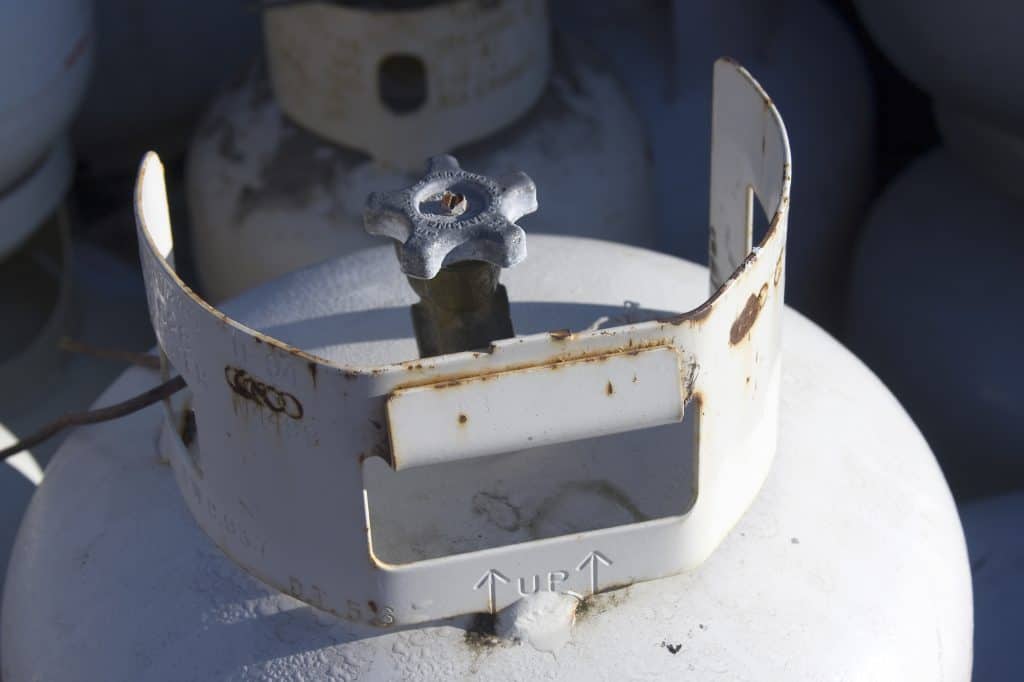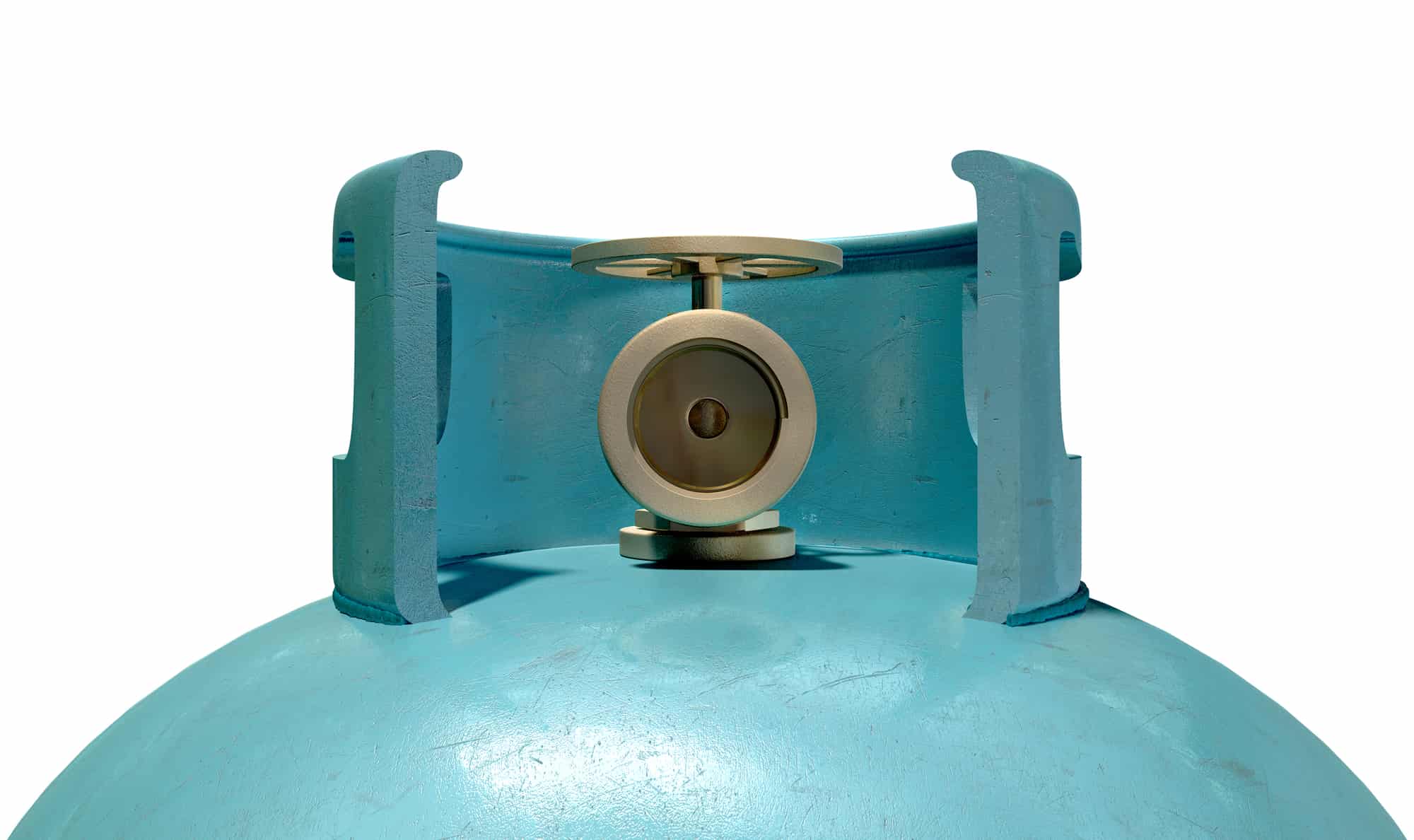Regardless of how new your propane tank is or how often you inspect your propane system, there’s always the possibility that your tank will leak. That’s why everyone in your family needs to know what to do when it happens.
But did you know that you can stop a propane tank from leaking without the need for a repair or replacement?
To stop a propane tank from leaking, you should first eliminate all potential igniters to minimize risks. You also need to open the windows to reduce built-up gas. Once it’s safe, you can use soap and water to find the leak. After that, you can tighten the screws and valve to stop the leak.
Unfortunately, these steps may not be enough to stop a propane tank from leaking.
So, let’s go through all the steps you need to take to quickly and safely deal with it. Stick around because this article will help you gain the vital information that can keep you safe and prevent leaks from happening in the first place.
How to Determine a Leaking Propane Tank
Regardless of how you look at it, a leaking propane tank is a bomb that can explode at any time.
So, if you suspect that your propane tank is leaking, you have to deal with it with urgency and care. Although it’s not advisable to fix it yourself, it doesn’t mean that you can’t do anything to stop it.
There are two ways to determine whether you have a leaking propane tank: a hissing sound or an awful smell.
If your propane tank is leaking, you may hear a hissing sound. However, this often means that the leak is substantial, so you’d have to be more careful and act faster.
A more reliable way to identify leaks, though, is through smell.
Manufacturers add an odorant to propane; it’s one of the safety features they have to help you detect a gas leak. It’ll always be a distinct smell, something you don’t normally smell inside a house, like a skunk, rotten egg, or a dead animal.
As soon as you notice any of these things, stop whatever it is you’re doing. Even the slightest spark can cause an explosion, and it won’t wait for you to finish whatever it is you’re doing. So, stop right away and do the following steps:

Turn Off the Main Gas Supply Valve
It’s the first thing you should do to prevent even more damages and make it easier for you to deal with the leak. You can turn off the main gas supply valve by turning the knob clockwise. If you have more than one tank, turn all of them off to minimize the risk.
Get Rid of All Potential Igniters
Before you try anything to stop a propane tank from leaking, you must first look after your safety. So, turn off all potential igniters, including the following:
- Open flames
- Household lights
- Appliances
- Cellphone
Open Your Windows
The biggest risk to any leaking tank is when there’s too much built-up gas inside the house. If the leak is substantial, you won’t be able to do anything because inhaling propane can make it difficult to breathe.
So, after you’ve turned off all potential igniters, open as many windows as you can to create natural ventilation.
Doing so will help lessen the built-up gas inside your house.
Find Where the Leak Is Coming From
Your propane tank will have enough gas to allow you to find where the leak is coming from, but you’d have to do it as soon as possible. There are two easy ways to find leaks in your propane tank:
- Mix 1 cup dishwashing soap with 1 cup warm water in a spray bottle.
- Use a leak detector solution.
Once you have either of these, spray your solution around the gauges and valve of the tank. It should cover the surface to be sure that you’re finding the real problem.
Slowly Open the Cylinder Valve
Once you have your solution all over the valve and gauges, slowly open it to release some gas. Bubbles will form on the location where the leak is coming from.
The bubbles will also tell you how strong the leak is: the bigger the bubbles, the stronger the leak.
If you discover multiple leaks in the tank, leave a marking on all of them and note how strong the leaks are in those areas.
Tighten the Screws and Valve
Turn off the cylinder valve to stop the leak, then use a Phillips-head screwdriver to tighten the screws on the face gauge. You may also need to tighten the valve by turning it clockwise. Often, leaks come from loose screws and valves, and tightening them can save you from all the troubles of replacing your propane tank.
Find Out if the Tank Still Leaks
Leave the tank for at least 10 minutes, then spray your mixture or solution on the marked areas where the leaks were. Slowly turn on the cylinder valve and see if there are still bubbles forming in those areas.
You have to do this check because tightening the screws and valve doesn’t always stop a propane tank from leaking.
Note: If you can still see bubbles on the gauge or valve, proceed to step #8.

Stop Trying to Repair the Propane Tank
There is no other safe way to repair a propane tank, so you have to stop working on it if tightening the screws and valve didn’t work.
Move to a safe location and call your local propane dealer, 911, or the fire department to get a professional to help you with the leak.
Remember, don’t try to fix the tank more than tightening the screws.
You’ll need a professional to repair the tank or get a replacement from your dealer. Finally, don’t enter your house until a qualified professional tells you that your house is clear.
Additional Safety Measures for Propane Tanks
There’s very little you can do to prevent propane tanks from leaking because, in most cases, the tank is already faulty when you get it. It could also be because the tank is too old, which poses a greater risk for you.
Rusty tanks can dissipate the odorant that manufacturers add to propane, making it harder for you to detect leaks. So, be sure to check the tank that you’re using and always ask for a replacement if it looks too old.
Overfilled tanks can also be dangerous, especially when they’re in storage. So, as soon as you get a propane tank, be sure to find the tare weight (TW) printed anywhere on the tank. TW is the tank’s weight when empty.
Weigh the tank, then subtract the TW to give you the weight of the propane inside it. If it’s more than what the tank can safely hold, then it’s overweight, and you’d have to release some of it.
Finally, you should get a qualified professional to conduct regular inspection of your propane system. Doing so will help you identify potential issues and ensure that you won’t have leakage problems in the future.
Remember, when it comes to propane tanks, you have to be proactive and do whatever you can to prevent leaks even before they happen.
Conclusion
A leaking propane tank is very dangerous, and you have to act as soon as you suspect there’s a leak. Manufacturers add an odorant to propane, making it easier for you to detect leaks and take the necessary steps to keep you and your family safe.
Using a mixture of soap and water, you can easily detect where the leak is coming from, allowing you to stop it. If tightening the screws and valve doesn’t work, it would be best to call a professional to help you repair or replace your propane tank and clear the gas inside your house.
Sources
- Crystal Flash: Propane Leak Safety – 7 Steps to Take If You Suspect a Propane Leak
- YouTube: What to Do If You Suspect a Propane Gas Leak. (Smell Gas)
- Hunker: How to Stop a Propane Tank from Leaking
- Propane 101: Propane Tank Leaks – Hear a Leak?
- Cooking StackExchange: Propane Grill Leaking from Valve Stem – Seasoned Advice
- Homesteading Today: Propane Tank Leak–Sealant Advice?
- Keystone Propane: Propane Gas Safety Tips
- RestorationMaster Finder: Propane Tank Storage Safety Tips

